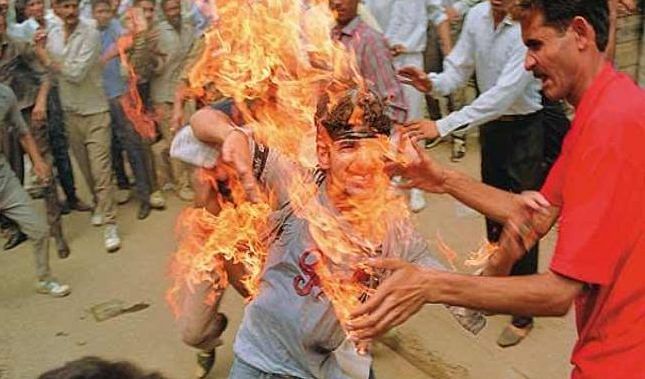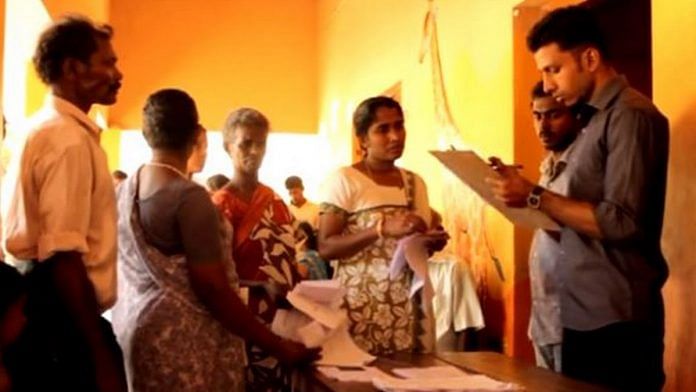New Delhi: Thirty years ago, on 7 August 1990, Vishwanath Pratap Singh, the prime minister at the time, announced that Other Backward Classes (OBCs) would get 27 per cent reservation in jobs in central government services and public sector units. The announcement was made before both Houses of Parliament.
The decision was based on a report submitted on 31 December 1980 that recommended reservations for OBCs not just in government jobs but also central education institutions. The recommendation was made by the Mandal Commission, which was set up in 1979 under the Morarji Desai government and chaired by B.P. Mandal.
ThePrint looks back through the decades to see how the recommendations of the Mandal Commission were received, both at the time and since then, as well as the status of reservation of OBCs in governmental institutions.
Also read: It’s a puzzle why VP Singh was never accepted by OBCs even after Mandal Commission
When it all began
In 1979, it was the Morarji Desai government which set up the Mandal Commission to identify socially or educationally backward classes to address caste discrimination. It was chaired by B.P. Mandal, who was once the Bihar chief minister. The Commission recommended that members of OBCs be given 27 per cent reservations for jobs under the Central government and public sector undertakings. This would take the total number of reservations for Scheduled Castes and Scheduled Tribes to 49 per cent.
Soon after V.P. Singh’s announcement, protests rocked the country. Many students took to the streets, holding dharnas and blocking roads. These evolved into anti-Mandal protests, which took an ugly turn in September 1990 when Delhi University student from Deshbandhu College, Rajeev Goswami, self-immolated. Goswami became the face of the anti-Mandal movement at that point.

According to historian Ramachandra Guha, nearly 200 students self-immolated in these protests, of which more than 60 succumbed to their injuries, he wrote in his book ‘India After Gandhi’.
The recommendation for OBC reservations in central government institutions was finally implemented in 1992 while the education quota came into force in 2006.
Also read: How BJP is undoing three decades of Mandal gains and still getting OBC support
Who did Mandal commission benefit
Over two decades after its implementation, experts say gross inequity continues to exist in how the benefits of the reservations are enjoyed by different communities within the OBC.
A parliamentary panel on the Welfare of OBCs had in its February 2019 report noted that in spite of four revisions of the income criteria since 1997, the 27 per cent vacancies reserved in favour of OBCs were not being filled up. The committee said the data received from 78 ministries and departments regarding representation of OBCs in the posts and services of the central government as on 1 March 2016 reflected poor OBC occupancy levels in central government ministries.
According to this government data, of the 32.58 lakh government employees (which includes Group A, B, C), the number of those from OBCs are 7 lakh — 21 per cent of the quota as against 27 per cent. The maximum number of OBCs — 6.4 lakh or 22.65 per cent — are employed in Group C, which comprises mainly the safai karamcharis, i.e., the sanitation department staff.
To address these anomalies, the Narendra Modi government constituted a four-member commission headed by retired Delhi High Court Chief Justice G. Rohini in October 2017. The committee’s mandate was to look into the issue of sub categorisation within OBCs.
Their mandate also included looking into how the 27 per cent reservation for OBCs in jobs and education was being implemented and if all categories of OBCs were benefitting from it.
The Rohini Commission, as it came to be known, found that out of almost 6,000 castes and communities in the OBCs, only 40 such communities had gotten 50 per cent of reservation benefits for admission in central educational institutions and recruitment to the civil services. The panel further found that close to 20 per cent of OBC communities did not get a quota benefit from 2014 to 2018.
The commission’s tenure was recently extended until January 2021 to complete its study.
Speaking to ThePrint, national fellow at the Indian Council of Social Science Research, Sudha Pai explained that the Mandal Commission recommendations helped the economically better positioned OBCs more than the most backward castes. However, Pai noted that one can only truly benefit from the Mandal Commission recommendations when they manage to climb out of poverty.
“It is important to realise that it is not a social security scheme or a giveaway. Under the UPA (both I and II), many people managed to climb out of poverty and therefore that has been capitalised by the Modi government.”
As to how it impacted other backward classes, Pai said the recommendations had definitely helped and empowered them politically and gave them more of a voice.
Also read: From Mandal to Modi, OBC sub-categorisation is caught up in bad politics
The OBC ‘creamy layer’
To ensure that benefits of the recommendations of the Mandal Commission percolated down to the most backward communities, the creamy layer criteria was invoked in the popularly known Supreme Court ruling called the ‘Indira Sawhney Judgment’. It was delivered by the nine-judge bench on the Mandal Commission report in November 1992.
Under the present rules, a household with an annual income of Rs 8 lakh or above would be classified as belonging to the ‘creamy layer’ among OBCs and therefore, would not be eligible for reservations. However, it was reported that the Modi government had proposed to increase the ceiling for the creamy layer distinction from Rs 8 lakh per annum to Rs 12 lakh per annum. In July 2020, the National Commission for Backward Classes demanded that the income ceiling be doubled to Rs 16 lakh per annum.
Speaking about the distinction of the creamy layer, Pai explained that a certain level needs to be there to ensure that benefits percolate down to the most backward classes as well. “Currently, even the caste census has not come out. Therefore everyone is at present operating in the dark,” Pai said.
Also read: There’s no accurate data on Other Backward Classes. 2021 census should start counting







article read karte time sochta ho es writer ke caste ke bare me.
May be bhramin. And, he is writing on obc and subcategorization of obc.
I am thinking about the reasons he is giving for modi to form rohini commission for sub.
Do these reasons have weight? I don’t think so.
To me it just like:
Jab ho parliament me bania bhramin tab lota degraded kashtriya (obc kurmi, koiri, yadav etc ) ke hath…..
ye log likit jaye aur pura India soit jai. Bhramin bania parliament se sab kutch swarn bankar pocket me keye jai aur zamindars ko bahujan banakar sudra or dalito ke aisa apne hak ki leye larit jaye…
Thus, sochta hu en zamindaro ke heet ke liye parliament ko rotate karne necessary hai…